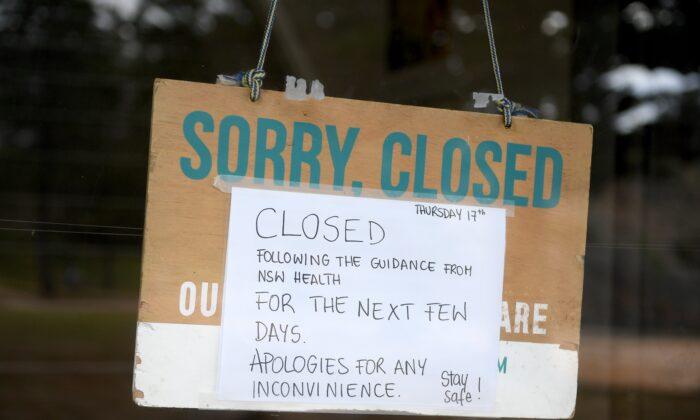Lockdowns have disproportionately affected workers for small businesses compared to large businesses, according to an analysis by the Institute of Public Affairs (IPA).
The New South Wales (NSW) jobs sector was hit hardest, with 200,000 small business workers, 64,000 medium-sized business workers, and 12,000 large business workers losing their jobs over the three-week period.
“Lockdown measures have a much larger impact on small businesses than they do on large businesses,” IPA research fellow Kurt Wallace said. “Every time a lockdown is implemented, the effect is the same: thousands of small business workers are forced out of work, while those working for large corporates are far more likely to keep their jobs.”

Further, the IPA argues that unrelenting lockdowns mean large conglomerates will dominate the economy as local communities lose their small businesses.
“Lockdowns have the same effect as an aggressive form of asset stripping, where all of the capital from small businesses is stripped and re-directed toward big corporates,” Wallace said.
The Reserve Bank of Australia (RBA) had similar conclusions back in March when it said the experience of businesses in lockdown had been “quite uneven.”
Kent said much of the difference reflects the fact that some of the most heavily affected industries, such as cafes, restaurants, and recreation, are small businesses.
IPA said there were a few factors that caused small businesses to be disproportionately harmed by lockdowns. For example, they are less likely to be able to accommodate remote working, less able to withstand prolonged periods of reduced income, and more likely to have difficulty getting external funding.

July ABS data did reveal that the unemployment rate had fallen to 4.6 percent, the lowest in 12 years. However, this was driven by decreased participation rate and higher underemployment.
Small and medium businesses will now be eligible to receive government assistance without having received JobKeeper in the March quarter or being a flood affected business.
This means that SMEs who are dealing with the economic impacts of COVID-19 and have a turnover of less than $250 million will be able to access loans of up to $5 million for a term of up to 10 years. The government will also guarantee 80 percent of the loan.





